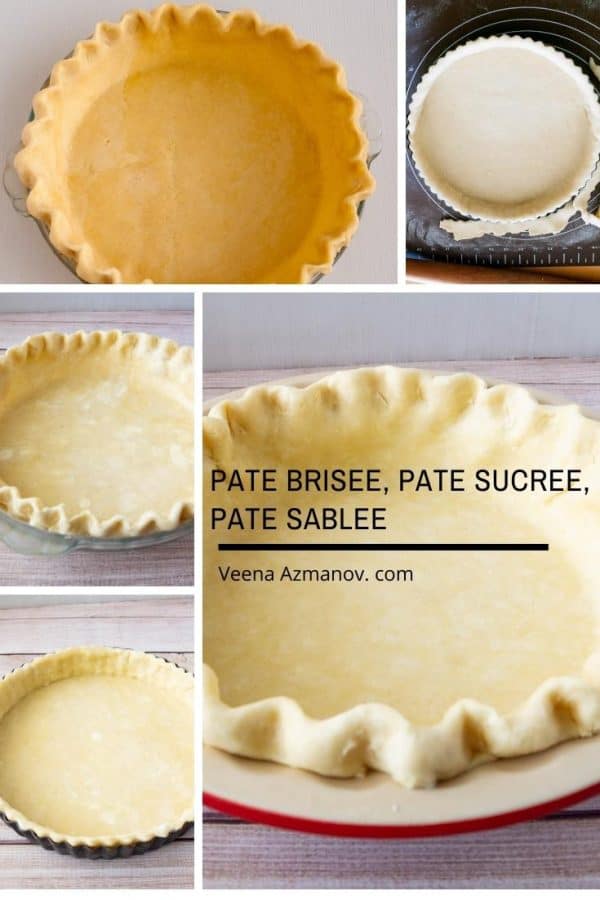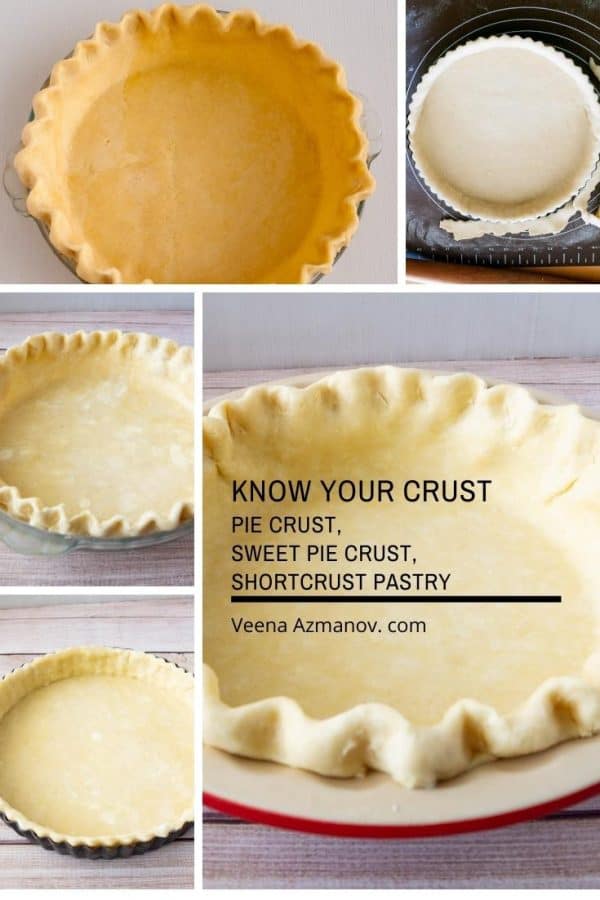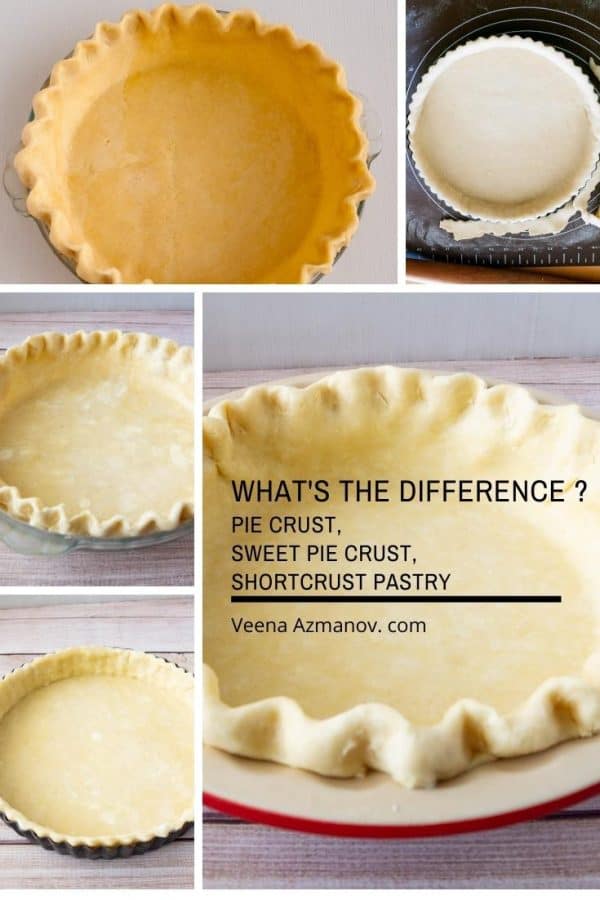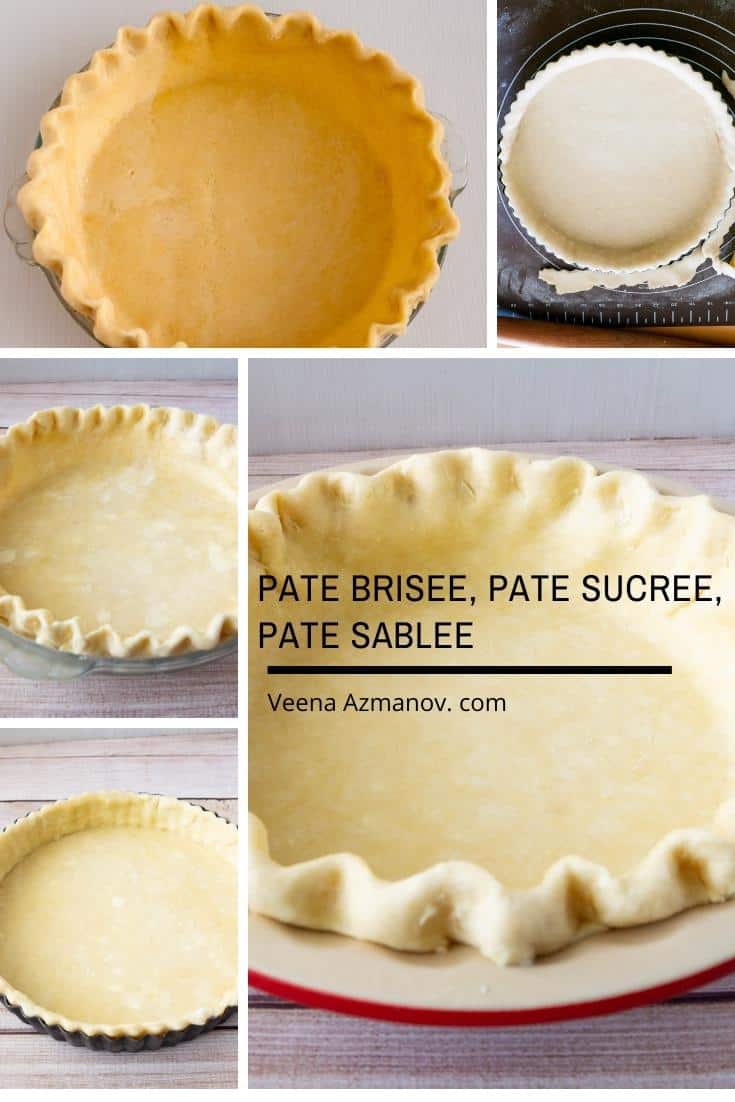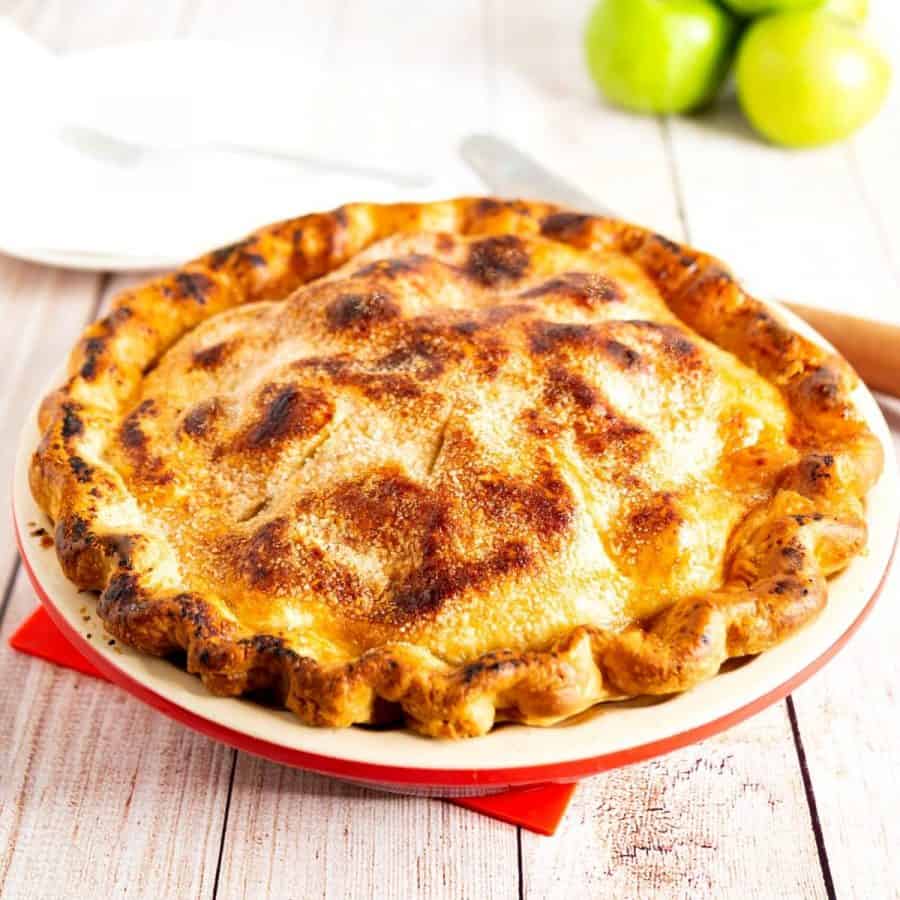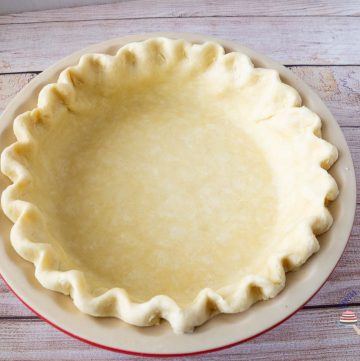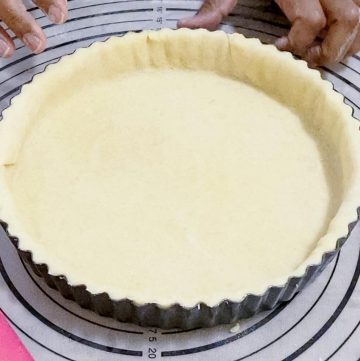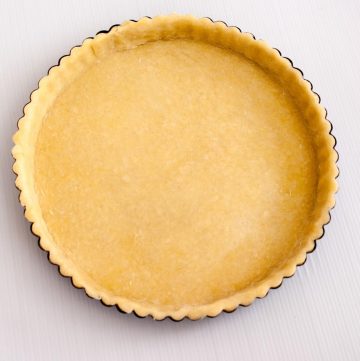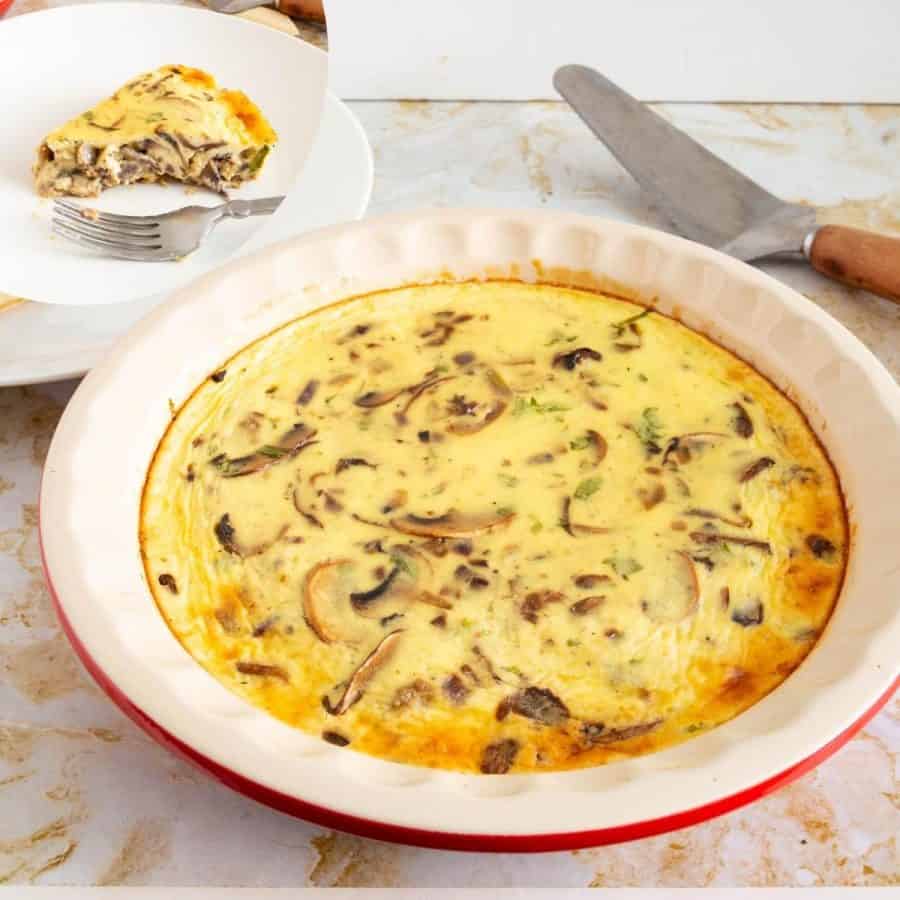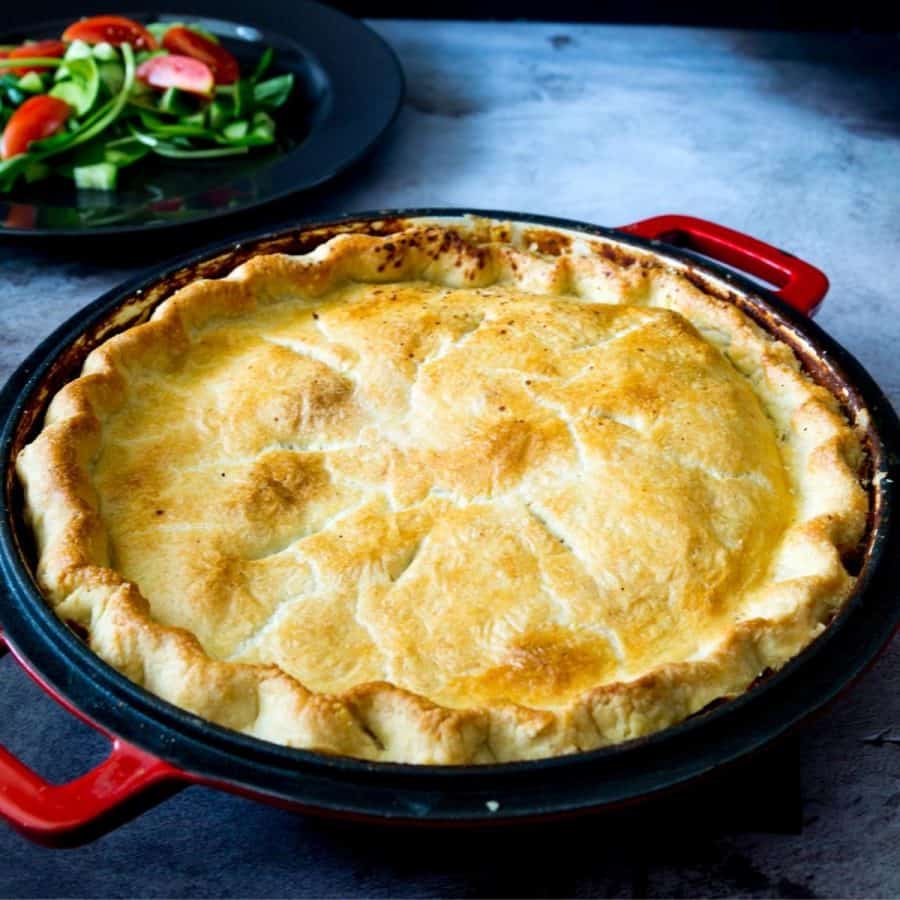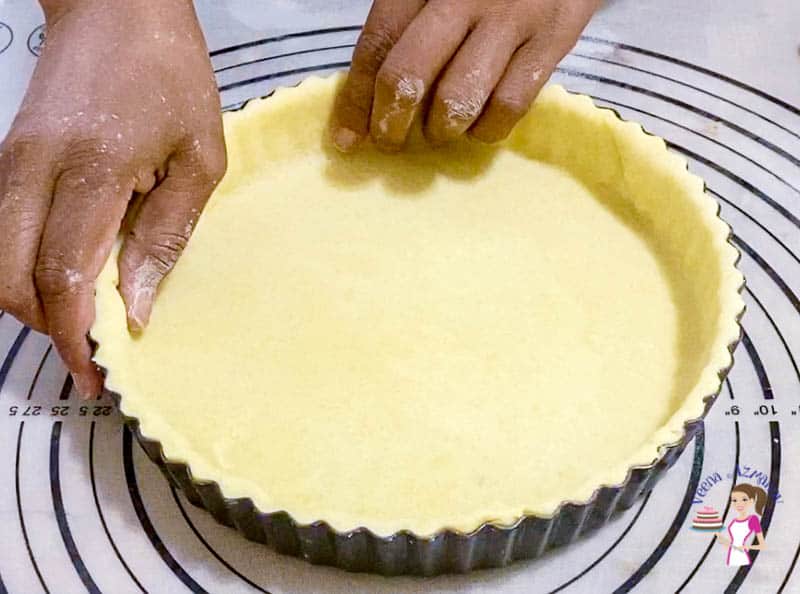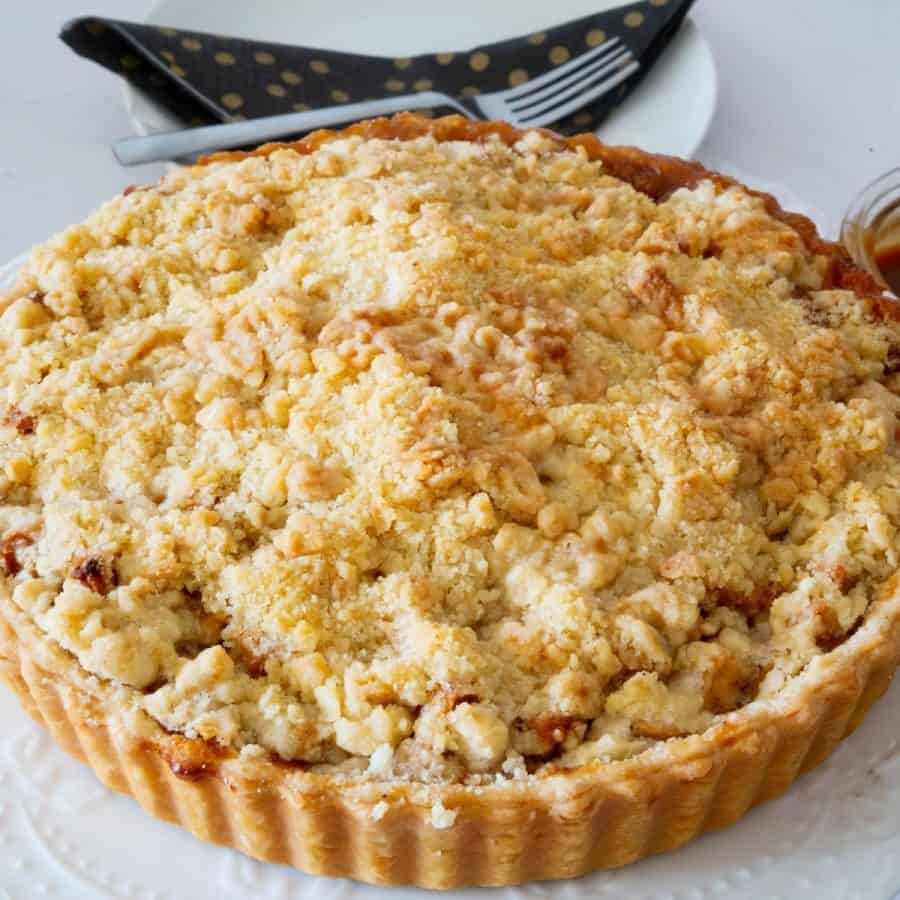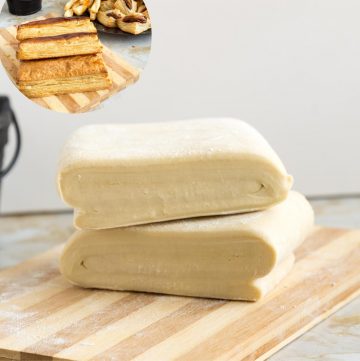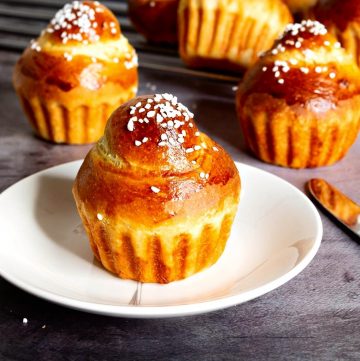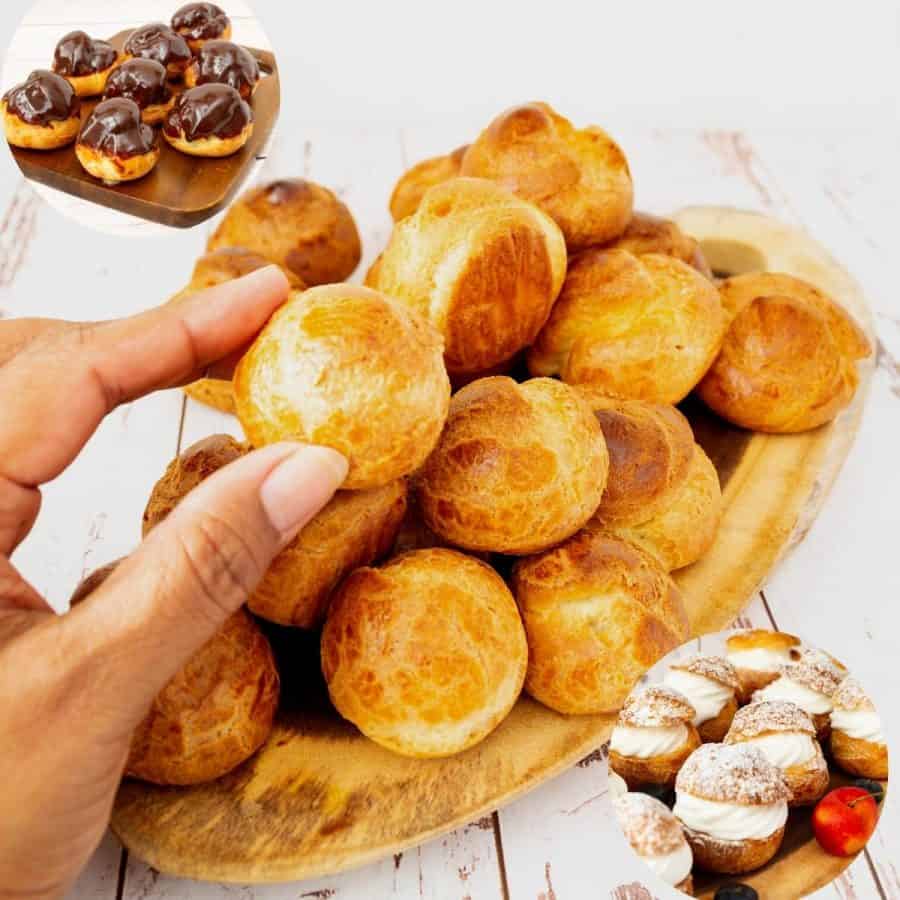Most often, you would use a crust to make a pie or a tart. Technically, they are the same in the sense that they all have a shell and a filling. Also, the basic ingredients to make these crusts are usually flour and butter with a few other additions for binding. And, while they are similar, they are not exactly the same. And, That’s exactly where things get confusing.
There are three main crust:
Pâte Brisée – Pie crust Pâte Sucrée – Sweet pie crust (shortcrust) and Pâte sablée – Rich shortcrust (sweet cookie crust or shortbread crust)
The main differences
Pâte Brisée – A pie crust is a basic pastry dough using flour, butter, and water as the main ingredients. It can be used for sweet pies, like apple pie, as well as for savory dishes like quiches. Brisée in French means ‘broken’ and refers to the broken pieces of fat in the pie crust. In addition, it uses water to combine the ingredients and has a delicate and flaky texture. Pâte Sucrée – Is the same as the above pie crust but sweeter. Sucrée means sweet in French. It also uses the same ingredients and method with the addition of a little sugar. And it uses egg yolk as the binding agent. As a result, it’s more crumbly rather than a flaky crust. Shortcrust is often used for sweet tarts with sweet fillings. And yet, it can also be used for some pies, quiches and savory treats. Pâte sablée – Rich shortcrust pastry, is your dessert pastry and very much like a cookie crust. In addition, it has a higher percentage of sugar. Sablee means sandy or grainy. It uses a shortbread style creaming method in which sugar and butter are creamed together. As a result, the dough is very tender and crumbly, similar to shortbread. Also, almond or nut meals are often used to enhance the sandy texture of this dough.
Let’s identify the three tarts below
The top two are pie crust: one is a single pie crust made for a pecan pie, while the second is a double pie crust made for an apple pie. On the bottom left, is a sweet pie crust made for a cherry pie. And, on the right is a rich shortcrust made for a fruit tart. Notice the shortcrust dough has the color from the egg yolks while the other three are made with water or a combination.
Frequently asked questions
Did you LIKE this recipe? Save it for later. You can find my recipes on Pinterest. Follow me on Facebook, Twitter, and Instagram.Subscribe, and I’ll send you new recipes right to your inbox. Pâte Brisée is the basic dough of them all. This is probably the one recipe you can make any time because it uses every day ingredients we always have on hand. With only four main ingredients butter, flour, salt, cold water, and a simple method this is the easiest of all pastry doughs. The process is simple – we use cold butter that’s cut into the flour into small pieces. The uneven texture resulting from the butter distribution results in a dough that’s flaky and crumbly. It also uses the same ingredients and method with the addition of a little sugar. Often, egg yolk is used as the binding agent, instead of water. As a result, the crust is more crumbly. If you’ve ever eaten a fruit tart – it’s probably made with a Pâte sablée. Sometimes, the crust is fully baked, then the filling is added later such as a pastry cream with fruits. But, often, this crust is also partially baked before adding the filling and baking it further with a filling such as a frangipani. Texture – This is a sweetened, rich, buttery dough that’s crisp. Unlike Pate Sucree that’s still quite flaky and crumbly. This has a very cookie-like texture, very similar to a shortbread that will shatter into small crumbles if pricked with a fork. It’s definitely a very delicate crust. But, it’s surprisingly easy to master because the dough is quite forgiving. You can easily patch pieces together and it will still be perfect. The method – Unlike the other two crusts, where you use chilled butter and high-percentage fat/lard cut into the flour to create a chewy flaky texture. Here we use room temperature butter and the creaming method. The butter and sugar are creamed so it’s equally distributed all through the flour. This method prevents the formation of gluten because each grain of flour is coated with butter. This results in a tender, rich, buttery crust. I have shown you three methods to work with this crust.
A Bakewell tart is very common and uses this rich shortcrust pastry Fruit tarts filled with pastry cream and topped with your favorite fruits – Berries, strawberry, blueberries. Lemon curd tart is a simple and easy tart you can make in minutes if you have a Pâte sabléee on hand. Just use a jar of lemon curd, or better yet, make my no-fail recipe for lemon curd. Try chocolate ganache tart – White chocolate ganache with raspberries is very popular and so is a dark chocolate ganache.
The bottom crust is typically rolled out and placed in the pie dish or pan to create the base. The filling, whether it’s fruit, custard, or other ingredients, is then added on top of the bottom crust. The top crust is rolled out separately and placed over the filling, sealing the edges with the bottom crust. It is often adorned with decorative slits or shapes to allow steam to escape during baking. And yet, when I make a quiche or pie for home, I like to use my stoneware pie pan. The advantage of stoneware is that it gives a lovely crisp crust that does not get soggy as it cools down. And, the quiche or pie also stays warm longer. For example – Here you see two pecan pies. I made the classic pecan pie in a pie pan for the home. I made my favorite pecan pie in a tart pan so I could take it to with me for dinner over at family. Personally, I prefer to make a crustless tart or pie such as my crust-less Swiss chard quiche and crustless kale artichokes ricotta quiche. However, if you still need to make a low-fat pie crust for any reason here’s a recipe you may like to use.
Ingredients:
1 1/4 cups all-purpose flour 1/4 teaspoon salt 1/4 cup cold unsalted butter, cut into small pieces 1/4 cup plain Greek yogurt 2-4 tablespoons ice water
Instructions:
Thank you for sharing - Save for later
